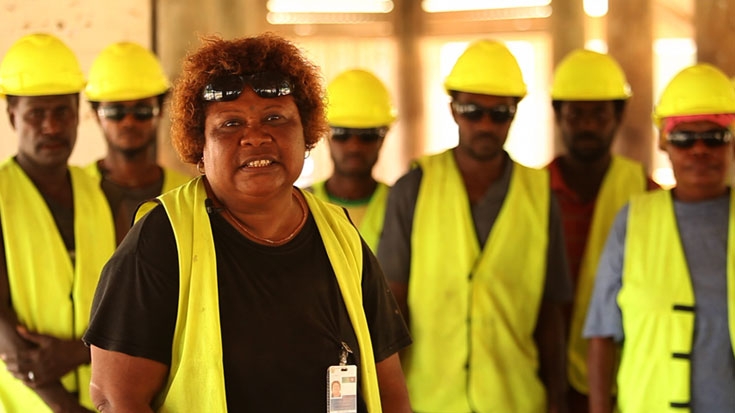Overview
The first Mining Technical Assistance Project in Papua New Guinea contributed to creating an enabling environment for sustainable mining, with a special focus on environmental and social aspects, and improved mining legislation and institutions. The project also worked to create better and more meaningful relationships with communities and increase mining-related benefits at the local level. One particularly pioneering part of the project was the Women in Mining Initiative, which engaged and empowered women in mining-affected communities.
Challenge
Since independence, the mining sector has been vital to the local economy and economic fortunes of Papua New Guinea (PNG). Mining has made substantial contributions to government revenues, against a background of challenging social issues and significant environmental impacts in some mining areas. A persistent problem was that benefits from mining often failed to reach local communities. Where they did, they tended to be captured by men, but the impacts of social disruption and environmental harm fell most heavily on women and children.
Approach
What made this technical assistance project so successful? The project worked on several different levels, including policy work to strengthen legislation; support for investment, and social development activities through benefit sharing and community participation, particularly through the involvement of women. In this way, the project was able to not only improve the investment environment and help revive exploration, but also translate mining activity into better development outcomes for communities. Establishing a Geographical Information System (GIS) helped encourage exploration and promote investment. New legislation improved policy, strategy, and regulation. Training programs built government capacity in tax collection, auditing and other essential functions. One of the most innovative aspects of the project was its support to the Women in Mining Initiative, a series of activities designed to empower women. This support enabled women in mining-affected communities to participate more equitably in mining benefits, and play a larger part in decision-making.
Results
- By 2006, more than Papua New Guinean Kina 56 million (approximately US$26 million) was collected in new tax revenues.
- Three new mining developments were approved with a combined value of US$1.2 billion. This activity followed a period of more than five years when no new investments took place. Applications for new exploration licenses increased by more than 80 percent between 2002 and 2005.
- Communities benefited from local development activities at mining sites. These included:
- improved consultations as part of the government’s new Sustainable Mining Development policy;
- training and skills transfer programs;
- increased availability and use of microcredit and new business startups;
- improved development planning, with fully participatory regional development plans drawn up for two mining areas; and
- better planning for mine closures.
- Three international conferences for the Women in Mining Initiative were organized and attended by hundreds of women from mining areas in the country. Six local action plans were integrated in a National Action Plan for Women in Mining Areas (2007-2012), endorsed by the government, and a Women’s Officer was appointed by each of the largest mining companies.
- The success of the GIS data digitization project was outstanding. The areas where the GIS work was completed on average received five times more applications than the rest of the country.
- The project supported the establishment of the autonomous Mineral Resources Authority (MRA) to help increase sustainability.
- A new Mining Safety Act was enacted and implemented and two new Mines Inspectors were appointed.
